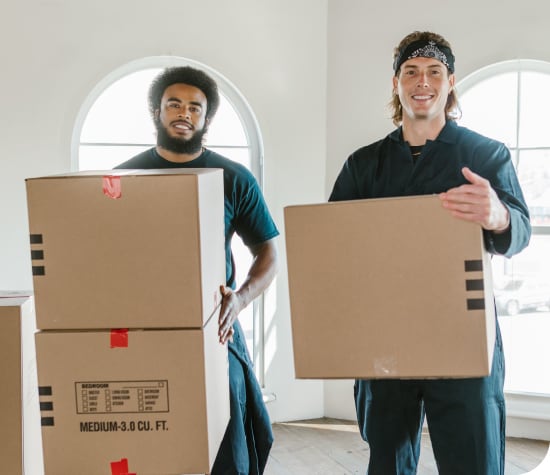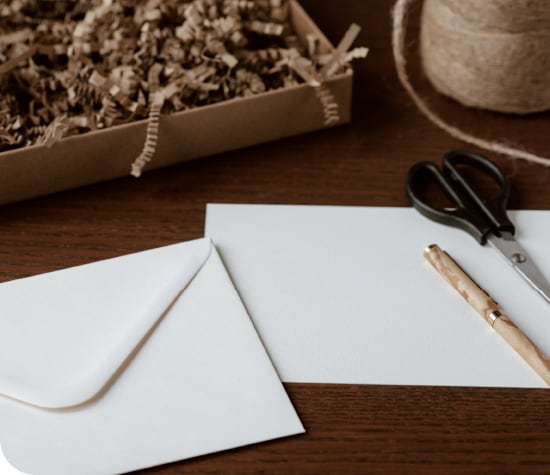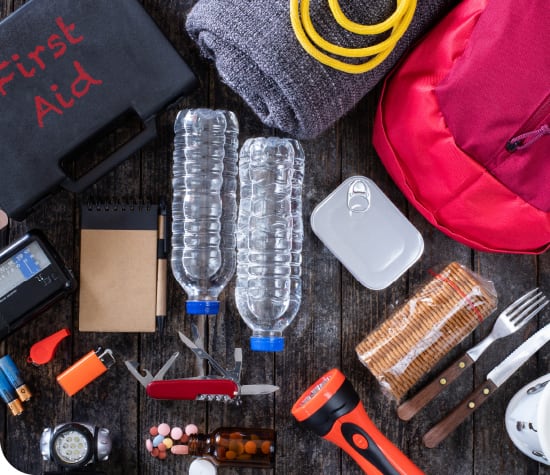
How would YOU finish the sentence? We’ll wager that unless you pay someone to pack, transport, and unpack all your prized possessions, moving is not on your top 10 list of favorite things to do. It can break the bank and your back, and moving can put a STRAIN on even the healthiest relationships.
At Colliers Hill, we want your move to be as headache and hassle-free as possible, so we checked with the experts and scoured the most current resources to bring you the best tips, hacks, apps and advice to improve your move.
From digital downloads that keep all the info you need in the palm of your hand, to timelines and checklists you can print and check off old- school style, these next pages will help you identify the tasks you need to complete before, during and after the moving trucks show up!

At your new place…
If there’s a move in your future, first, purge. Packing and moving clothes you never wear, gifts you’ve never used, or food and medicine that has expired will cost you more time, effort and money on the other end.
We recommend the three-bag approach. It can be painful but rewarding.
 Toss.
Toss.These are things that NO ONE on the planet will want. They are the broken things you meant to fix; the projects you meant to complete; the worn out, downtrodden and fraying. Get rid of them.
 Sell or Give Away.
Sell or Give Away.These are the clothes you haven’t worn in a year or more. These are the gifts someone gave you. These are things you bought and never use. Give or donate these things to someone who will truly love and appreciate taking over ownership.
 Keep.
Keep.These pass the one-year test. They pass the still-functional test. They pass the “Yes I will some day enjoy/use/wear this, I swear” test.
If you’re a hobbyist with a LOT of leftovers and scraps, (we’re talking three cubic yards or more of wood, metal, demo’d buildings and rooms, irreparable things, etc.) check out theBagster.com or call them at 877-789-2247 for easy, affordable removal.
It’s this easy: buy the bag at your local retailer (Home Depot and Lowe’s are good bets), and fill the bag with up to 3,300 pounds of debris. When you’re ready,
Waste Management will come and pick it up for you.
What could be simpler?
Telephone
Internet
Cable
Gas and Electric
Water
Magazines, Newspapers
Other Home Deliveries (e.g., food, water, etc.)
Trash Collection
Home Security
Airline Frequent Flyer Programs
Emergency Road Service
Attorneys
Accountants
Tax Assessors
Insurance Company
Doctors and other Healthcare Professionals
Dentists
Pharmacists
Veterinarian
Banks and Credit Unions
Credit Card Accounts
Car Loan Companies
Financial Aid Offices
Finance Companies
U.S. Postal Service
Voter Registration
Department of Motor Vehicles
Social Security Administration
Department of Veteran Affair
Internal Revenue Service
Friends and Family
Employers
School
Alumni Associations
Charities and Nonprofit Organizations
Churches and Ministries
Other Home Deliveries (e.g., food, water, etc.)
Trash Collection
Home Security
MoveAdvisor is a moving organization app that features a state-of-the-art home inventory checklist tool that enables you to create a complete virtual house moving inventory list of your household for the upcoming relocation. A few taps is all you need to create a detailed digital map of your home and fill the rooms with all the household items and personal possessions you have decided to take with you to your new residence.
Unpakt is user-friendly and offers great functionality for planning, booking, and managing a move online and will recommend you a mover and give you a guaranteed price.
Updater is an invite-only app that promises to save you time, money and headaches by finding the best internet plans, scheduling installation, helping transfer your utilities, notify your contacts of your new address and compare/reserve a mover.
Maintaining lists is the number one key to success when it comes to moving. There are so many list-keeping apps to choose from, but we love Google Keep – it has the right balance of simplicity and feature-richness.
You can:
These features can come in handy during every phase of your move: planning, packing, moving day, unpacking, changing your address, etc. If you’re dealing with a DIY or “mini move” and only need a few items transported, look no further than Dolly. It allows you to hire local helpers and truck owners for your moving, delivery and hauling needs. If you do have your own vehicle, you can book a labor-only move for help with loading, unloading and moving furniture or other large items.


MOVING COMPANY COMPS – Get at least three in-home estimates and ask about hidden costs like charging for heavy items, repacking, stairs or waiting. Make a note of what is included and is the estimate binding, i.e., a guaranteed price.


MOVING INVENTORY – Make lists. Take pictures. Calculate values.
Whether you use the apps or prefer the old-fashioned way, don’t neglect this essential moving to-do. While we hope it never happens, we’ve moved enough to know that things break in transit. And people drop things.
An inventory (with pictures!) is the kind of indisputable proof you’ll want in case there’s a scratch. Or a crack. Or something missing!


MOVING LABELS – Here’s something we KNOW you need.
Labels for your moving boxes.
You can download free printable labels, courtesy of Simple Mom Review to attach to boxes and items. They’re categorized and
color-coded by room, so you and your movers know which box belongs where.


MOVING ANNOUNCEMENTS – They’re fun to send and fun to receive: moving postcards and emails to tell friends and family your new address. Check out the designs at Zazzle.com and BeeyondPaper.com. Shutterfly.com has some unique customizable stationery cards, and GreetingsIsland.com offers printable templates!


MOVING DISCOUNTS – Renting a truck yourself and treating friends to lunch is the most cost-effective way to move. Be sure to read the fine print for the trucking company’s mileage allowances and fuel surcharges. If you can, have specific tasks in mind to assign to helpers so they’re not standing around.
Look for free or deeply discounted boxes on Craigslist.org, Next Door, Facebook online swap and recycle sites. Most people are happy to let you take their used moving boxes off their hands (and property) for little or no money.
Peak moving season is Memorial Day to Labor Day and movers tell us that their busiest days of the week are Thursdays and Fridays. If you can move during the off-peak season, and on a slower day, like Monday or Tuesday, you should save money.

MOVING CONTAINERS AND STORAGE – Unless the planets perfectly align, you may find the day you have to leave your old digs does not exactly coincide with the day you occupy your new home.
A moving container might be the ideal solution to that timing issue. These units are made of construction- grade wood, steel and aluminum, or heavy-duty plastic and range in length from about seven feet.
The containers are delivered to the house you’re vacating where you can pack at your own pace, secure your belongings inside, and lock them up. The container company will send drivers to move the container to a storage facility until you’re ready to receive delivery.
Here are five companies to compare: 1800PackRat.com, UPack.com, UHaul.com, SmartBoxMovingandStorage.com, Pods.com and ZippyShell.com.
Ask your insurance agent if your homeowner’s policy covers items stored in a container that’s on-premise and while in transit to your new home. If your storage container is held at the company’s warehouse for a period of time, the company may offer you a contents insurance policy through a third-party provider to cover the items while in storage.

MOVING: FIRST-NIGHT BOXES – Before you move, pack a box for you and your family with everything you’re going to need that first night in your new home. Here are some of our suggestions:
And it wouldn’t hurt to pack a second box for your new house with some cleaning products, like paper towels, a sponge and some all- purpose cleaner. You’ll need some tools, too, like a hammer, box- cutter, wrench, screwdriver and nails.
![]()
Moving is an exciting and exhausting adventure, but think of it this way, even in a sea of boxes, shrink wrap and packing paper, the hardest part is behind you!
In no time you’ll have furniture in its place, clothes put away and photos and treasures on display.
Then you can spend your time making memories with the ones you love. Because that’s what make a new house feel like home!